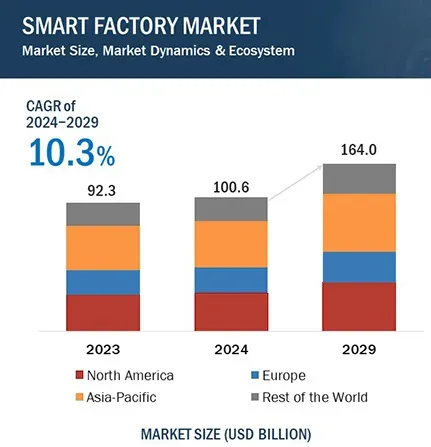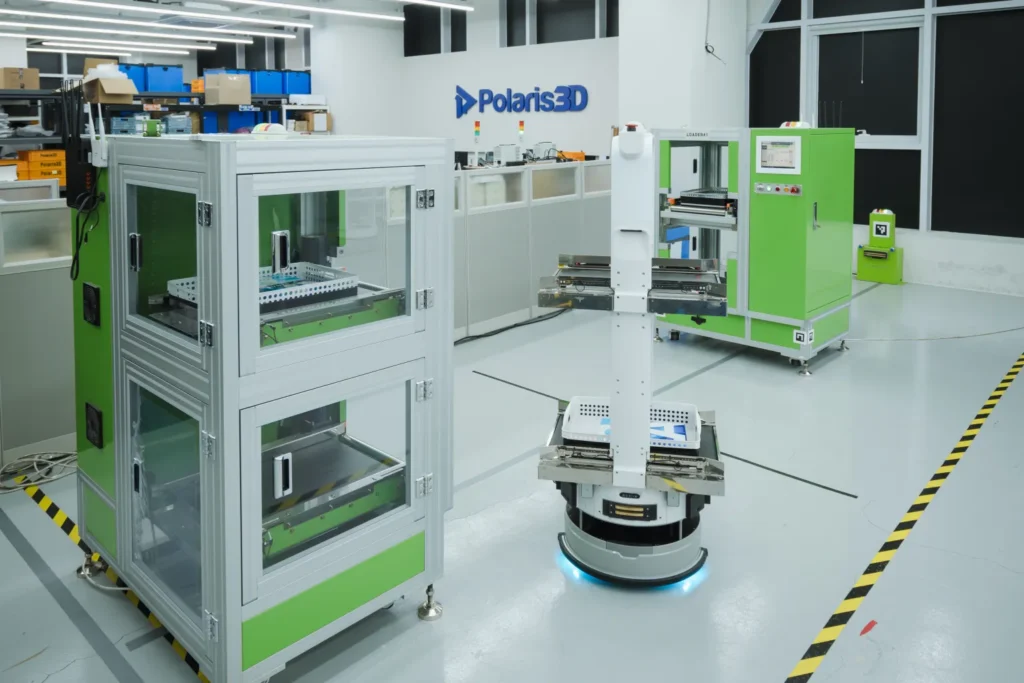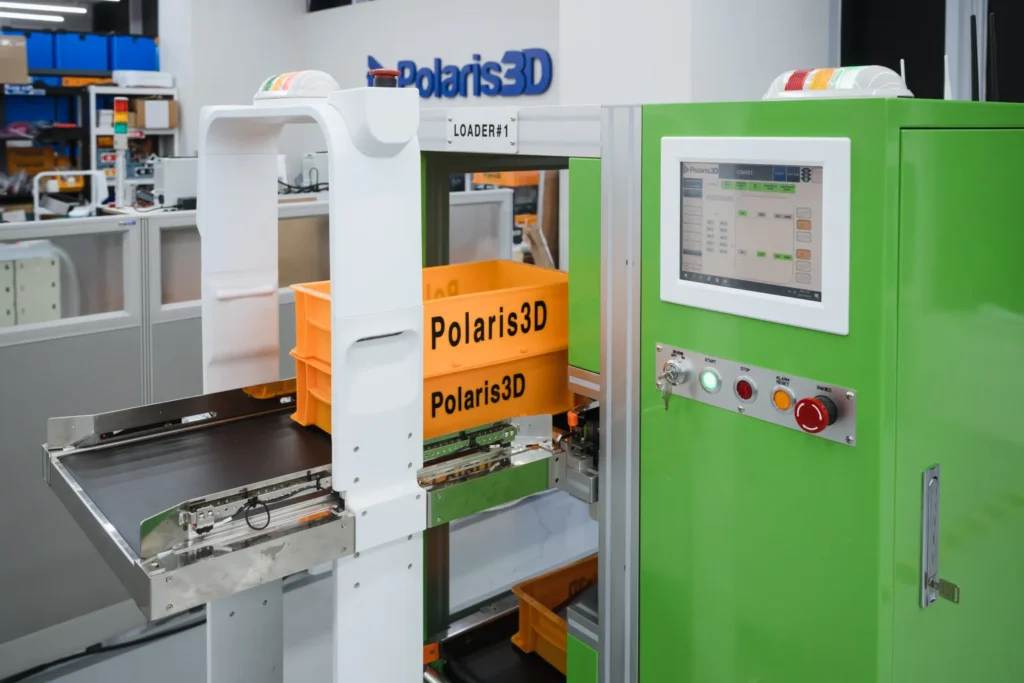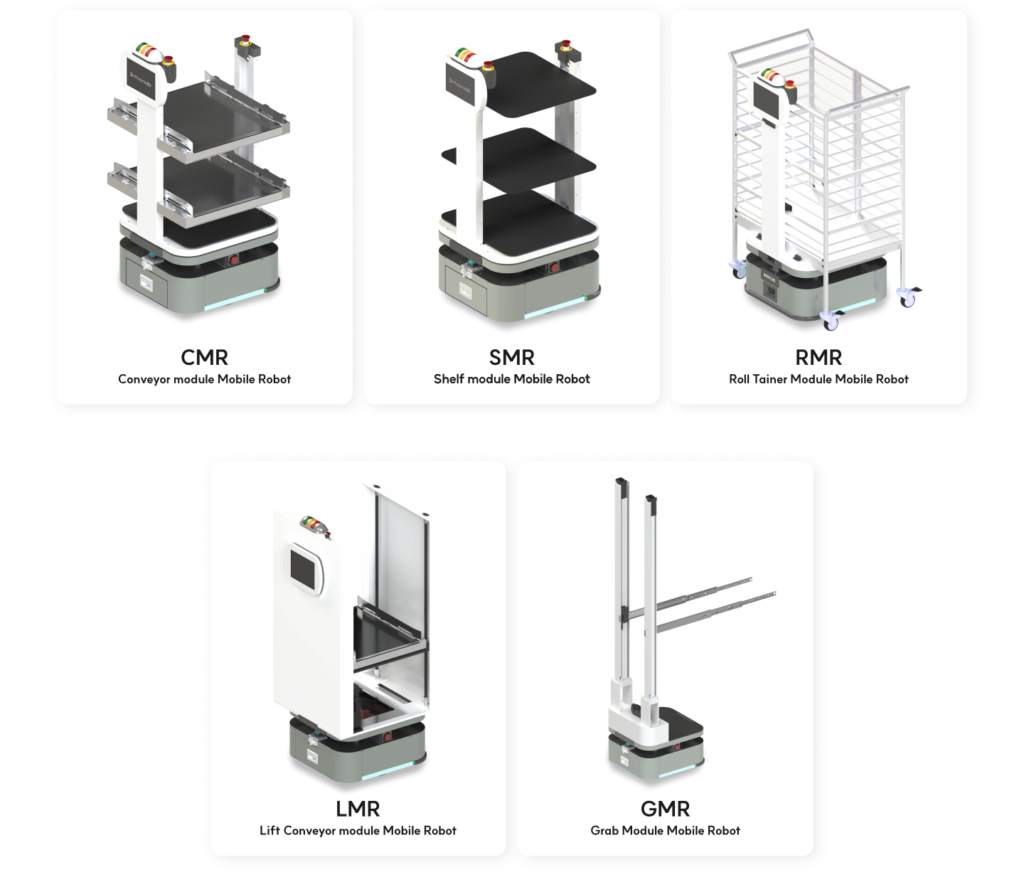AMR vs AGV: Key Differences Explained
Why Are AMRs and AGVs at the Center of Smart Factory Innovation? (AGV vs AMR)
With the global smart factory market projected to grow from USD 100.6 billion in 2024 to USD 164.0 billion by 2029 at a CAGR of 10.3%, digital transformation in manufacturing is no longer optional—it’s essential. Manufacturers face a shortage of skilled labor, increasing production complexity, and rising demand for shorter lead times. As a result, they are rapidly adopting unmanned automation systems. Among these, logistics and material handling automation are emerging as top priorities, offering improvements in productivity, safety, and operational efficiency.
(출처: https://www.marketsandmarkets.com/Market-Reports/smart-factory-market-1227.html)

For companies moving to smart factories, knowing the differences between AGVs and AMRs is key to choosing the right solution. AMRs, in particular, are emerging as a key enabler of smart manufacturing, offering several advantages over traditional AGVs. As a result, many AMR solution providers are intensifying efforts to advance their technologies.
Complete Comparison of AGVs and AMRs: What Are the Key Differences? (AGV vs AMR)

🔍 Terminology Overview
- AGV (Automated Guided Vehicle)
- An AGV is a path-following automated vehicle guided by magnetic tape, QR codes, or wires embedded in the floor. Due to its fixed-path nature, AGVs offer limited flexibility in adapting to changes in the environment.
- AMR (Autonomous Mobile Robot)
- An AMR uses LiDAR, 3D cameras, and AI to perceive its surroundings, create maps autonomously, and navigate independently. Unlike AGVs, AMRs detect and avoid obstacles in real-time and adapt to diverse environments, providing significantly higher operational flexibility.
🔍 Technical Definition (AGV vs AMR)
| Category | AGV (Automated Guided Vehicle) | AMR (Autonomous Mobile Robot) |
| Navigation Method | Fixed routes guided by magnetic tape, QR codes, or magnets | Autonomous navigation and map generation based on SLAM |
| Obstacle Avoidance | Not possible or very limited | Real-time sensor-based avoidance |
| Environmental Flexibility | Low | High |
| Infrastructure Requirements | Requires route setup, costly to reconfigure | No dedicated infrastructure needed; adapts through map updates |
| Typical Application | Simple repetitive tasks | Dynamic smart manufacturing environments |
| SLAM (Simultaneous Localization and Mapping): A technology that enables a robot to simultaneously estimate its own position and build a map of its environment.
📎 Key Takeaways
- AGVs follow predetermined paths only.
- AMRs are intelligent robots that adapt to their environment dynamically.
- AMRs outperform AGVs in obstacle avoidance, real-time route adjustments, and installation flexibility.
- For those aiming to build smart factories, AMRs are likely the better choice.
Key Advantages of AMRs: Why They Outperform AGVs (AGV vs AMR)

- Autonomous Navigation and Path Flexibility
- AMRs use SLAM-based autonomous navigation to perceive their environment and independently plan their routes.
- Even when production lines change, AMRs can automatically adapt with map updates only, requiring no additional infrastructure modifications.
- Obstacle Avoidance Capabilities
- Because AGVs follow fixed paths, they come to a stop when encountering obstacles. In contrast, AMRs can detect obstacles using LiDAR and AI-powered cameras, allowing them to autonomously reroute or stop as needed.
- This significantly reduces the risk of collisions, ensuring both operational efficiency and workplace safety.
- Lower Installation and Maintenance Costs
- AMRs can operate without requiring dedicated infrastructure.
- No need for physical layout changes → reduced Total Cost of Ownership (TCO).
- Scalability Through Modular Architecture
- AMRs support a variety of interchangeable service modules (e.g., shelving units, lifts, conveyors).
- Ideal for building customized smart factory solutions.
- Data-Driven Operations
- AMRs collect and analyze real-time data through integrated sensors.
- This enables smart operations by optimizing productivity, traffic flow, and identifying bottlenecks.
🚀 Polaris3D SMAR: A Leading AMR Solution
✅ Key Differentiators of Polaris3D’s AMR Platform ‘SMAR’
| Feature | Description |
|---|---|
| Structure | Modular AMR platform (Mobility Module + various Service Modules) |
| Applicability | Optimized for narrow spaces, complex production lines, and environments maintaining existing equipment |
| Service Modules | Diverse types including shelf, conveyor, and lift modules |
| Integrated Accessories | Automatic chargers, smart feeders, simple buffers, etc. |
| Unified Operation | Real-time multi-robot control via proprietary management system ‘Nepler’ |

🏭 Ideal Use Cases for SMAR
- Manufacturing sites with frequent process changes
- Companies seeking phased automation while preserving existing equipment
- Environments with narrow pathways or high-density layouts
- Situations requiring ROI-focused automation investment strategies
FAQ: Frequently Asked Questions About AMR vs AGV
| Q1. Are AGVs becoming completely obsolete? |
| A. No. AGVs are still well-suited for simple repetitive tasks and fixed routes. However, AMRs offer greater flexibility and scalability, making them better suited for many environments |
| Q2. Is it true that implementing AMRs requires no infrastructure changes? |
| A. Yes. AMRs operate using SLAM technology and do not require additional guidance tapes or physical markers. |
| Q3. How is maintenance handled after AMR deployment? |
| A. Typically, AMRs support remote updates and self-diagnostic features, resulting in generally lower maintenance costs compared to AGVs. |
| Q4. Are collaborative robots (Co-bots) and AMRs different technologies? |
| A. Yes. Co-bots work alongside human operators, whereas AMRs navigate autonomously. However, these technologies can be integrated and operated together. |
| Q5. Are there any drawbacks to AMRs? |
| A. Initial costs may be higher than AGVs, but over the long term, reduced installation and maintenance expenses plus increased flexibility lead to greater overall efficiency. |
The Key to Smart Factory Transformation: Choosing AMRs Shapes the Future

As mentioned earlier, most manufacturing sites today are on the brink of smart factory transformation, with AMRs (Autonomous Mobile Robots) — recognized for their efficiency and flexibility — leading this shift. AMRs are evolving beyond simple transport robots to become next-generation collaborative partners that connect processes and operate based on data.
Ultimately, the critical question is which company’s AMR you choose. A partner with solutions tailored to your site’s environment and objectives, backed by proven technological expertise, is essential.
The SMAR series by Polaris3D is a modular AMR platform designed for various manufacturing environments. It has already proven its performance in the global market. With Polaris3D by your side, your smart factory transformation is within reach.











